Aegis | Mythical Object

The aegis (Ancient Greek: αἰγίς, aigís) is one of the main elements of the prodigious armor of Zeus and Athena. Although different traditions conceived it in different ways, generally the aegis of Zeus was a shield, and that of Athena a goatskin breastplate. By extension, it also means 'shield', 'protection', 'defense'.
The aegis was kept in antiquity as a symbol of invulnerability guaranteed by the gods. Roman emperors were often depicted with an amulet placed on their chest, a miniature shield adorned with the head of Medusa.
Mythology
In Greek mythology, according to Homer, the aegis is the shield or buckler of Zeus, carved for him by Hephaestus, trimmed with tassels and bearing the head of Medusa in its center. Originally a symbol of the storm cloud, it derives probably from αισσσο aisso, meaning 'swift and violent motion'. Another possible etymology is from the root Αιγ- Aig-, 'wave', as in Αιγαίον (Aegean), 'rolling sea'.
When Zeus stirred it up, Mount Ida would be covered with clouds, producing a kind of gigantic tornado called καταιγίς, thunder would fall and men would be filled with dread; by paronomasia one would have metaphorized the name of such a storm with the Greek word for goat, αιχ. Sometimes Zeus lent it to Athena (with him it appeared in the Palladium) and, rarely, to Apollo.
In a later story it is related that Zeus used the skin of the goat Amalthea, which had suckled him in Crete, as a buckler when he went off to fight the Giants. There is also the legend that portrays the aegis as a fire-breathing monster, like the Chimera, which was killed by Athena, who then wore its skin as armor. Others even say that the aegis was the skin of the monstrous giant Pallas.
Another version tells that the aegis had actually been the skin of the goat used as a belt to hold the shield. When so used, it was usually fastened at the right shoulder, and partially enveloped the chest as it passed obliquely across the front and joined at the back to the shield under the left arm.
Thus, by extension, "aegis" was sometimes used to refer to the shield it held, and at other times to a breastplate, whose function it partly assumed.
In accordance with this double meaning, the aegis appears in works of art sometimes as the skin of an animal covering shoulders and arms, and sometimes as a breastplate, with a border of serpents corresponding to the tassels referred to by Homer, and usually with the head of Medusa in the center. She is often depicted on statues of Roman emperors, heroes and warriors, and also on cameos and vases.
Also, in Norse mythology, the dwarf Fafner wears a helmet called an aegis.
Egyptian and Nubian mythologies
The aegis also appears in Egyptian mythology, where the goddess Bastet was sometimes depicted carrying a ceremonial sistrum in one hand and an aegis in the other.
This usually resembled a necklace or gorget adorned with a lioness's head. Plato intuited the parallel between Athena and the ancient Egyptian and Libyan goddess Neit, a warrior deity who is also depicted carrying a shield.
Ancient Nubia shared many aspects of its mythology with that of ancient Egypt, and there is debate as to the true original source of some of the religious concepts shared by the two cultures, and whether assimilation was from Nubia to Egypt, or the other way around, or through mutual exchanges. There was a time when the Kush kingdom of Nubia ruled Egypt.
The image of Isis carrying an aegis was discovered in Sudan, and is likely to belong to the flourishing Meroe culture, successor to the Kush culture, because of the use of Egyptian hieroglyphs and cartouches.
